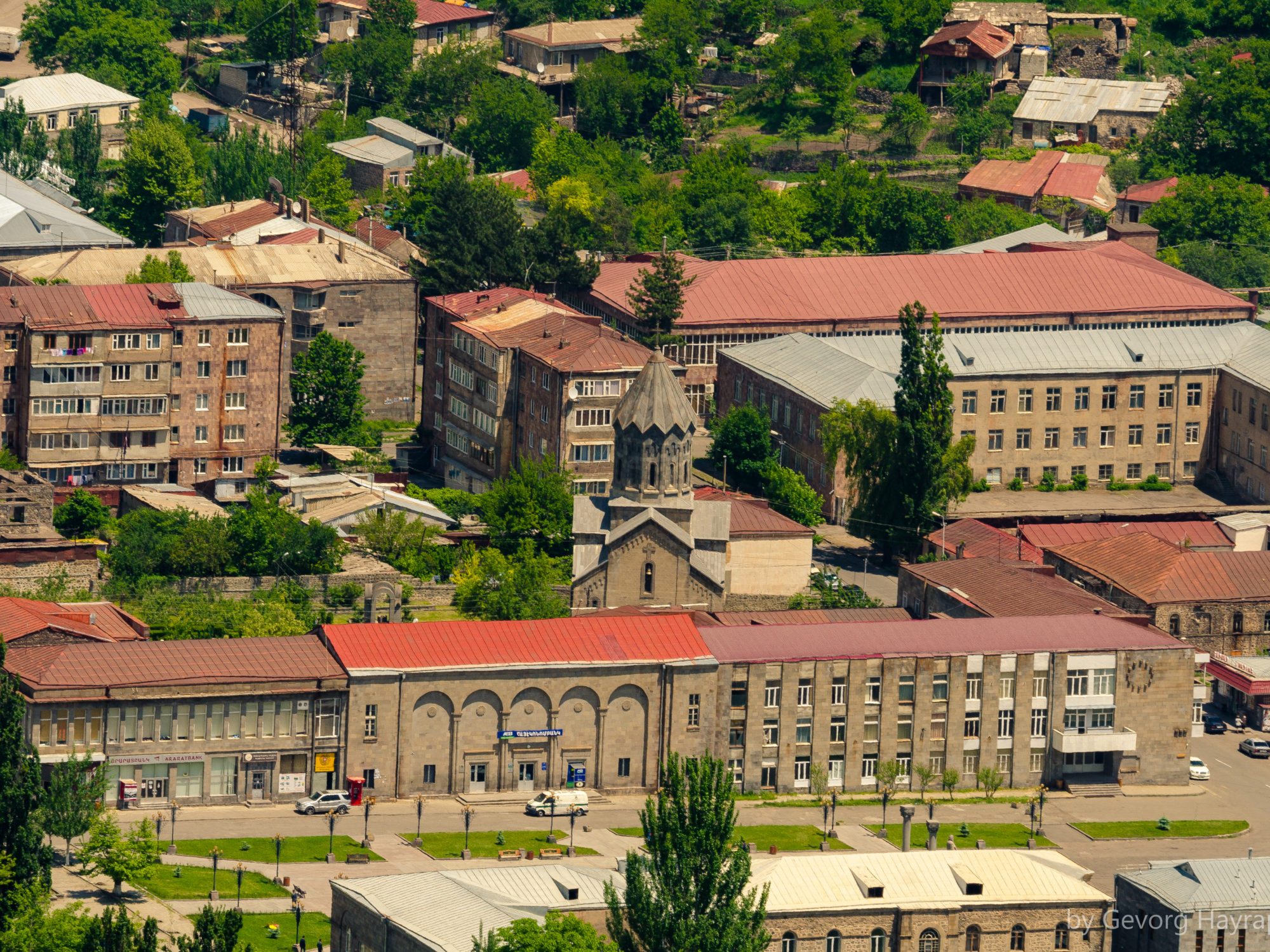As a town-settlement Goris was first mentioned in the 8th century B.C
Goris is one of the most charming towns in Southern Armenia located on the way to Nagorno Karabagh. The town itself is set in the valley of mountainous river Vararak (or river Goris), and surrounded by lush green mountains. It is 254 km away from the Armenian capital Yerevan and 67 km from the provincial center Kapan.
As a town-settlement Goris was first mentioned in the 8th century B.C., however the city at its current state was established in 1876. Being located on the Silk Road the city of Goris has been one of the most developed sites of the country in terms of trade, industry and education for many centuries.
The population of Goris is currently around 20,000 with a capacity of being extended to 45,000.
TThe city has 1 higher education institution – Goris State University, 2 high schools, 4 secondary schools, 2 sport schools, music, dance and art schools. 0The cultural infrastructure includes 3 museums, a city library, the Court of First Instance, a Drama Theatre and Touristic information Center.
Nestled in a bowl of green hills and mountains, with interesting formations and many previously inhabited caves in them, Goris has some of the nicest overall Armenian architecture in Armenia. The city was possibly the first built in a grid layout in Armenia, with a very quaint regional style of stone architecture. Goris itself is a well-planned city built mainly with two-storey houses along the straight and wide streets of the city which is sunk in orchard s and greenery of parks.
The rocks surrounding the city are known as “The Goris Stone Forest”. They represent amazing labyrinths of colored columns, pyramids, cones and towers. These figures combining a play of light and shadow make an indelible impression. A hilly Goris landscape is indented with gorges from which the rocks, like outlandish plants, reach out towards the sun, opening new and new fantastic landscapes, sometimes resembling extraterrestrial ones. The Goris Stone Forest looking like a film set of some extra-atmospheric blockbuster is the main sight-miracle of the city.
It should be mentioned that stone and earthen pyramids being a specific elements of the local landscape are loose inside, which feature enabled the ancient people to cut hollows inside them and arrange dwellings for themselves. Up to the mid-XIX century, they were inhabited with people who were unwilling to move to modern houses.
Located along a river in a valley surrounded by mountains, Goris is the last major town in Armenia for travelers continuing to Karabakh. It’s also quite difficult to get to Kapan or Meghri, and thus Iran without passing through Goris, making this the gateway of the South. Though Goris or Tatev can be crammed into a day trip from Yerevan, it’s much better to spend a few nights in the area, and along the way.
Visitors can also head to the nearby ancient cave village named Old Khndzoresk. But the must-see in the region remains the beautiful monastery of Tatev.
Goris is home to the Axel Bakunts house museum, commemorating one of Armenia’s great prose writers, who died in prison in 1937, one of many who paid the price for “nationalist deviationism.” There is a regional museum as well. At the beginning of the road toKhndzoresk is an 18th c. local melik’s house. Goris is famous for its home-made fruit vodkas, and for the medieval cave-dwellings carved out of the soft rock in the southern part of town. There is a modern church. (This paragraph is from the Rediscovering Armenia Guidebook.)











